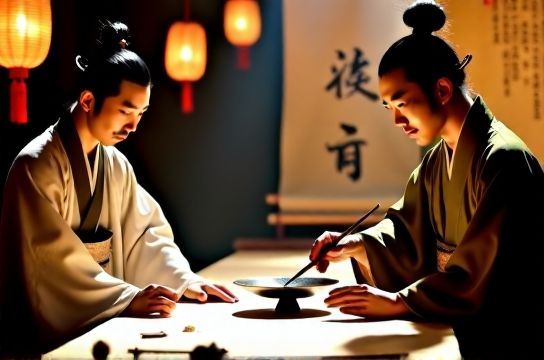Unbelievable Chinese Inventions With a Twist
- 时间:
- 浏览:15
- 来源:OrientDeck
When you think of ancient China, what comes to mind? Dragons, dynasties, and maybe dim sum? Hold up—because long before smartphones and space travel, the Chinese were busy inventing stuff that still powers our world today. And no, we’re not talking about fireworks just to spice up your Fourth of July BBQ. We’re diving into the real game-changers—ancient innovations so ahead of their time, they’d make Elon Musk blush.

The Big Four (That You’ve Probably Used Today)
Let’s cut to the chase: paper, printing, gunpowder, and the compass—the legendary 'Four Great Inventions' of ancient China. But here’s the twist: these weren’t just random eureka moments. They were carefully refined over centuries, each one reshaping civilization as we know it.
Take paper, for example. Invented by Cai Lun in 105 AD? Check. But did you know it was made from tree bark, fishing nets, and rags? Talk about recycling before it was cool. Before this, people were carving characters into bones or writing on silk—which, let’s be real, was way too expensive for your average Joe to jot down a grocery list.
Printing: The OG Content Boom
Fast forward to the 9th century Tang Dynasty—enter woodblock printing. Suddenly, books weren’t just for emperors and monks. By the Song Dynasty, Bi Sheng invented movable type around 1040 AD. That’s nearly 400 years before Gutenberg’s press! Imagine trying to run a blog without copy-paste—Bi Sheng basically gave us Ctrl+C and Ctrl+V in ceramic form.
Gunpowder: From Elixir to Explosion
Now, this one’s wild. Gunpowder wasn’t invented for war—it started as a failed attempt at an immortality potion. Taoist alchemists mixed sulfur, charcoal, and saltpeter hoping to cheat death. Instead, they got boom. By the 10th century, it was being used in flamethrowers, bombs, and yes, fireworks. So next time you watch a dazzling display, thank a disappointed monk.
The Compass: Navigating Without GPS
And then there’s the magnetic compass. Originally used for geomancy (feng shui, anyone?), it evolved into a navigation beast by the Song Dynasty. Sailors could finally cross oceans without relying on stars and vibes. This little needle didn’t just find north—it helped connect continents.
Beyond the Basics: Hidden Gems
But wait—there’s more. Ever heard of the south-pointing chariot? It wasn’t magic—it used differential gears to always point south, centuries before similar tech appeared in Europe. Or how about chain pumps for irrigation? These bamboo contraptions lifted water uphill using rotating wheels—simple, sustainable, and still used in some rural areas today.
And let’s not forget mechanical clocks. While Europe was still counting hours by church bells, Yi Xing, a Buddhist monk, built a water-powered clock with an escapement mechanism in 725 AD. That’s precision engineering powered by H2O.
Innovation That Still Matters
So why does this all matter now? Because these inventions didn’t just shape history—they laid the foundation for modern tech. No paper? No notebooks, no printing, no internet drafts. No compass? Good luck with your road trip. These weren’t just clever gadgets—they were cultural catalysts.
Here’s a quick look at how these inventions stack up:
| Invention | Year | Original Use | Modern Impact |
|---|---|---|---|
| Paper | 105 AD | Writing & Records | Books, Printing, Digital Docs |
| Movable Type | 1040 AD | Mass Book Production | Publishing, Media, Internet |
| Gunpowder | 9th Century | Alchemy Experiment | Military Tech, Fireworks |
| Magnetic Compass | 11th Century | Feng Shui, Navigation | Global Travel, GPS Systems |
These aren’t just relics—they’re roots. The next time you print a document, check your phone’s compass, or light up the sky with fireworks, remember: you’re tapping into a legacy that began in ancient China. Mind blown? Yeah, ours too.